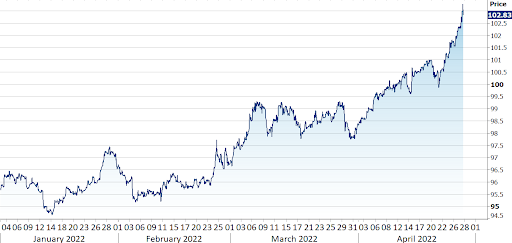US dollar rises to five-year high as sell-off in risk continues
( 3 min )
- Go back to blog home
- Latest
The sell-off in risk assets continued for another day on Wednesday, with concerns over global growth sending a host of currencies to multi-month or multi-year lows versus the US dollar.
Understandably, the European currencies were among the worst performers yesterday, notably the euro, which fell below the 1.06 on the dollar to its lowest level in five years. Not only does Russia’s energy ban present a risk to the Eastern European region, but to Europe as a whole. Germany’s economy ministry said on Wednesday that it was revising lower its 2022 growth forecast to 2.2% from 3.6%, which heaped further downward pressure on the euro. Comments from ECB member Kazaks that the bank could raise rates three times this year, including at the July meeting, helped put a bit of a temporary floor under the euro, although further downside is likely so long as market sentiment remains fragile. The CEE currencies have also underperformed in the past couple of trading sessions, notably the likes of the Polish zloty, which is down around 3% for the week.
Figure 1: US Dollar Index (YTD)

Source: Refinitiv Datastream Date: 27/04/2022
Attention in markets today will be on the Q1 US GDP figures, set for release this afternoon. Yet, given the time lag in the data, the reaction in currencies may be relatively limited.
To stay up to date with our publications, please choose one of the below:
📩 Click here to receive the latest market updates
👉 Our LinkedIn page for the latest news
✍️ Our Blog page for other FX market reports

